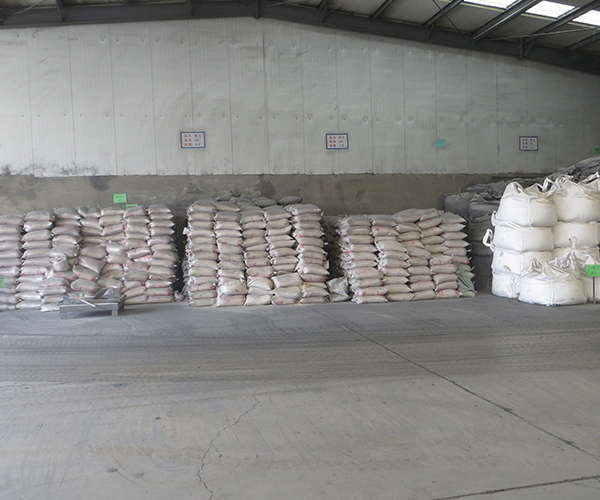Contact: Manager Qu
Phone: +86 15330915520
Contact: Manager Liu
Phone: +86 13464791403
Address: Dashiqiao City, Liaoning Province
Fused and combined magnesia chrome brick
Liaoning magnesia-chrome bricks are generally called recombined magnesia-chrome bricks made from synthetic raw materials, co-sintered magnesia-chrome materials or fused magnesia-chrome materials (or partly with fused magnesia) in foreign countries. The domestically produced fused Magnesia-chrome Brick (Rebounded Magnesia-chrome Brick) usually uses fused pre-synthesized magnesia-chrome materials as raw materials. Due to the high purity of the raw materials, it needs to be fired at a high temperature or ultra-high temperature above 1750°C. In addition, because this process uses the electrofusion method to pre-prepare a magnesia-chromium composite with complete spinelization, high direct bonding rate, and uniform phase distribution, a relatively uniform structure is obtained, so that the periclase solid solution has both thermal shock resistance and The advantage of corrosion resistance improves the performance of the product. The gray particles of the fused magnesia chrome brick are magnesia, and the particles containing the white desolvent phase are fused pre-synthesized magnesia chrome sand. In Figure 3b, the white particles are chrome ore, the gray particles with the smaller desolvent phase are magnesia, and the gray particles with the larger desolvent phase are fused pre-synthesized magnesia chrome sand. It can be seen from Figure 3 that the matrix part of the fused and combined magnesia chrome brick is mainly fused magnesia chrome sand, followed by more composite spinel (white) filled in the magnesia chrome sand crystals. The matrix structure is a dense network, and the refractory grains are directly bonded, without silicate bonding phase.

Semi-rebunded Magnesia-chrome Brick (Semi-rebunded Magnesia-chrome Brick) is a type of magnesia chrome brick between the fused magnesia chrome brick and the direct bonded magnesia chrome brick. The raw materials used in production include fused pre-synthesized magnesia chrome sand, chrome concentrate and magnesia sand. This type of brick is also fired at a high temperature above 1700℃, and the refractory grains in the brick are often directly bonded. Its advantages are good thermal shock resistance, corrosion resistance and erosion resistance. The microstructure of the semi-recombined magnesia chrome brick has the characteristics of directly combining the magnesia chrome brick and the characteristics of the fusion recombination magnesia chrome brick. In the matrix part, the main crystalline phase is granular periclase, which contains a large amount of spinel desolvent phase, followed by composite spinel (white) and a small amount of off-white film silicate phase (CMS) filled in the square Between magnesia crystals. The matrix structure is a porous network. Most of the main crystalline phase of periclase is directly bonded by periclase-composite spinel, and a few are cemented together by the silicate phase. The microstructure of semi-recombined magnesia-chrome bricks has the characteristics of directly combining magnesia-chrome bricks and also has the characteristics of fused recombined magnesia-chrome bricks. In the matrix part, the main crystalline phase is granular periclase, which contains a large amount of spinel desolvent phase, followed by composite spinel (white) and a small amount of off-white film silicate phase (CMS) filled in the square Between magnesia crystals. The matrix structure is a porous network. Most of the main crystalline phase of periclase is directly bonded by periclase-composite spinel, and a few are cemented together by the silicate phase.
Since the mid-1960s, directly bonded magnesia-chrome bricks have been used in the high-temperature zone of cement rotary kilns. The main component of magnesia chrome brick is chromium oxide, which accounts for 8% to 20%. Many advantages of chromium oxide are difficult to replace with other oxides. The raw material of chromium oxide comes from chromite. The chromite used in magnesia chrome bricks has many advantages such as improved thermal shock resistance, corrosion resistance, kiln skin resistance, high temperature strength, low thermal conductivity, etc., and the price is very low. . If environmental protection factors are not considered, magnesia chrome brick is a kind of refractory material with high cost performance. However, it is well known that magnesia chrome bricks will produce a large amount of water-soluble hexavalent chromium, which is a heavy metal pollutant with strong carcinogenicity. The main source of hexavalent chromium produced in the cement production process is the magnesia-chrome bricks in the burning zone of the rotary kiln.
At present, the used abandoned magnesia-chrome bricks are basically not used, and centralized stacking treatment is not adopted, which will cause serious pollution to water sources and soil, which has caused widespread concern in society. Semi-recombined magnesia chrome brick refers to refractory products fired with part of fused magnesia chrome sand as raw materials. The main mineral composition of semi-recombined magnesia-chrome bricks is periclase, spinel and a small amount of silicate. Its resistance to thermal shock is better than directly combined with magnesia chrome bricks. The main application parts of semi-recombined magnesia-chrome bricks are: the wall of the sedimentation tank of the flash furnace; the furnace hearth of the electric furnace; the Ausmelt furnace; the bottom working layer of the reverberatory furnace and the copper outlet.